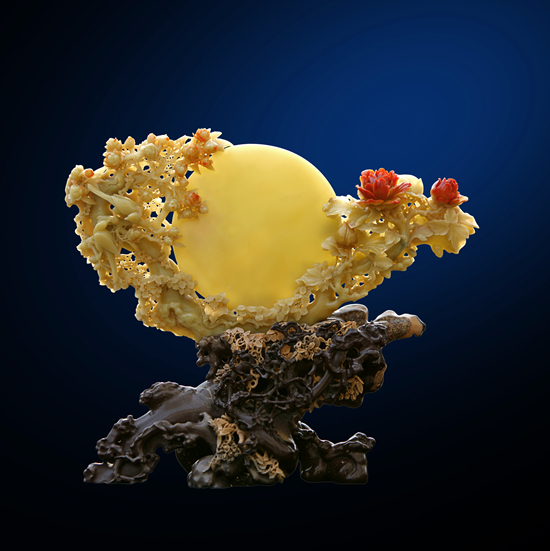Stone carving in Qingtian
The county of Qingtian, in the rolling hills of southern Zhejiang province, is famous for the stone carving crafts that are made of high-quality pyrophyllite, a type of silicate with the perfect hardness for carving and sculptures that comes in more than 100 varieties, depending on color, source, and pattern.
The best type of Qingtian stone (the pyrophyllite found in large amounts in the county) has a translucent, jelly-like texture. When it’s used to represent human figures, even the hair can be delineated clearly and when used to make seals or signets with Chinese characters, the carver’s tool can move very smoothly across the surface and the edges of the characters do not change even after long use.
No one knows when the Qingtian stone was first used for carving, but a set of four baby pigs carved from the stone that are on display in the Zhejiang Museum indicate that the carving craft dates back at least to the Six Dynasties period (222-589), so the art form is at least 1,500 years old, and the craftsmanship has improved over the years.
By the Tang Dynasty (618-907), the carvers were expanding their motifs and inventing new techniques. During the Song Dynasty (960-1279) they borrowed jade carving techniques to highlight the characteristics of each individual stone and began to create tiered pieces with extreme subtlety. During the Yuan (1271-1368) and Ming (1368-1644) dynasties, Qingtian stone items became popular with scholars and, in the Qing Dynasty (1644-1912), the carvings were chosen for royal tributes.
After the founding of the People's Republic of China in 1949, the craft developed steadily, with traditional themes, including landscapes, flowers, birds, and human figures which fit Chinese aesthetics, continuing to be the majority of the products. And many talented craftsmen have emerged in recent years and their brilliant works enriched the Qingtian stone carvings.
Then in 2006, the craft was added to the list of national cultural heritage and it has grown into a multi-million-yuan industry that employs 23,000 people and reaches customers in 40 countries and regions.

[Photo from en.gotohz.com]

 Print
Print Mail
Mail
 20 Cultural Symbols
20 Cultural Symbols Why Zhejiang
Why Zhejiang Experiencing high-tech products at WIC
Experiencing high-tech products at WIC Zhejiang Release
Zhejiang Release Zhejiang News
Zhejiang News